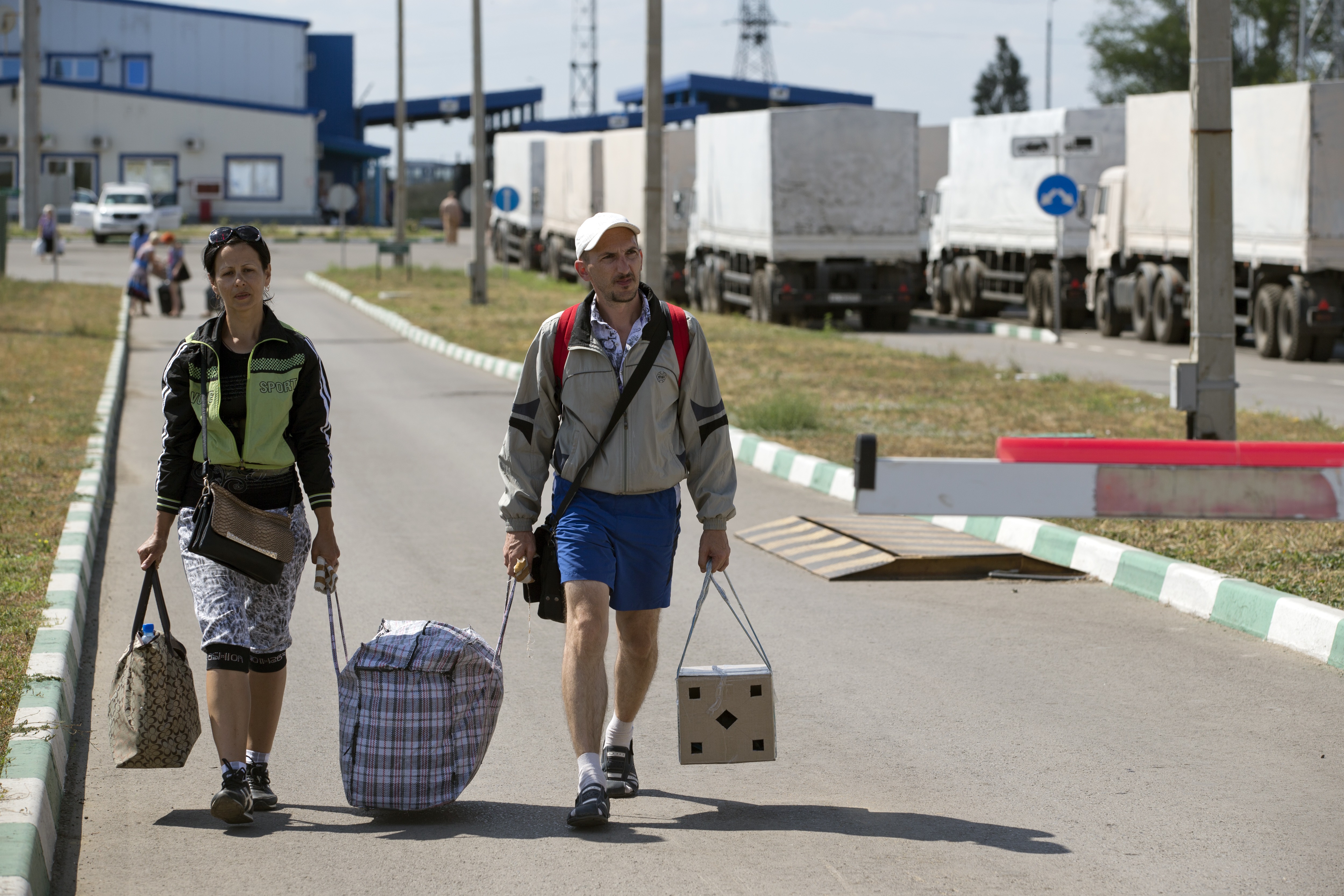North Caucasus Update
North Caucasus Update
A new winter-proof tent city opens
As it is clear that most of some 160,000 people driven from their homes in Chechnya will spend their second winter in Ingushetia, UNHCR has funded the construction of a winter-proof tent city that can house 4,000 people. The first to move into the new camp were displaced people who lived in extremely difficult conditions in decaying railway cars and makeshift spontaneous settlements. The new tents are fully winter-proof. They are equipped with wooden floors, electricity and heating. For the first time, an improved type of latrines will be used in the camp. The first tented camp, nicknamed "Alina" is the first of three such camps which will eventually house up to 12,000 people. 800 (capacity 15-20 persons) tents for the new camp have been donated by the Swedish Civil Defence Force and the Swedish Armed Forces. Some 200 more tents have been purchased from a Russian commercial supplier. Another supply of over 1,000 tents is being purchased internationally. UNHCR sees the provision of shelter as a key way to protect displaced persons in Ingushetia, since without winterized housing they would have no choice but to return to a possibly unsafe situation in Chechnya.
Makeshift settlements "winterized"
In addition to the construction of tented camps UNHCR is involved in the refurbishment of 55 spontaneous settlements which currently house 17,500 people. Work is progressing rapidly at the UNHCR pilot site at Karabulak - one of Ingushetia's largest spontaneous settlements which currently holds 2,700 occupants. Workers at the site are refurbishing a large farm building which will have 56 individual rooms, one room per family. UNHCR is supplying materials for the refurbishment as well as stoves. The displaced people themselves are working on the site.
More Chechens flee continued instability, lack of aid, few go back
A small number of people continue to arrive in Ingushetia from Chechnya at a rate of about 200 persons per week. They say they flee continued military activity in Chechnya, as well as "screening" operations by federal Russian forces in several areas of southern Chechnya: Tangi-Chu, Martan-Chu and Urus-Martan. Land mines are prevalent in most areas in Chechnya, representing a severe threat to civilians returning to the republic. There are numerous reports of mine strikes. Some people are also fleeing the difficult living conditions in Chechnya, citing lack of winter-proof shelter, irregular gas and electricity supply and the absence of adequate humanitarian assistance. UNHCR border monitors say a number of people arrive in Ingushetia at the time of aid distribution in order to collect humanitarian assistance and go back to Chechnya. Return movement to Chechnya remains very limited, even though two-way traffic continues across the Ingush-Chechen border. Some people go back to Chechnya briefly to collect their retirement pension checks or personal belongings but most return to Ingushetia.
Hundreds of Chechens in Ingushetia threatened by eviction
Some of more than 150,000 displaced Chechens in Ingushetia have outstayed their welcome and there are more and more cases of people being actually evicted by their hosts. Even more people are under pressure to leave. UNHCR and partner agencies try to remedy the situation by negotiating with the host families, giving them financial incentives and, if need be, finding alternative accommodation for those evicted. The Swiss Disaster Relief project of cash compensations, under which 2,000 host families have received a lump sum grant of $100, has somewhat eased the situation but the problem of evictions persists.








